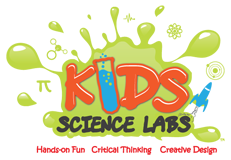Earth is the perfect place for us and even Mars pales in comparison. To live on another planet, we need to create (or find) the proper conditions - temperature, nutrition, water, oxygen to breathe and protection from the harshness of the sun’s energy (or lack thereof). On this day, our students explored the real concept of Terraforming as we explored how to manipulate soil, change an atmosphere, and survive off-Earth. Space, while so far away, is always present in our kids’ imagination because its a frequent topic of adventure books, cartoons, and movies. Make so mistake though, Earth is special, with its mild climate, access to liquid water, and abundant protections from the Earth’s brutal radiation.
Using KSL’s unique STEAM Innovation, our students investigated:
Design ways to adjust temperature using science fundamentals and discuss potential impacts on planetary exploration
Types of soil, how to enrich it with nutrients and testing soil’s ability to enable various plant growth
Explored which types of fruits, vegetables, and flowers may be helpful in changing a planets atmosphere and helping to sustain human life
Performed LSF (Look, Smell, Feel) tests to expand basic science investigative methods to compare and contrast various flowers and vegetables and discuss how well they may be adaptable to climates with higher CO2, like Mars
Later this week, your child will design their own Terraforming Mars KIT, complete with nutrition rich soil, seeds to practice growing flowers, vegetables and fruit at home, and custom ingredients that would make their adventure in space even better! Watch this video with your child to expand their depth of what it would take to actually terraform Mars




































